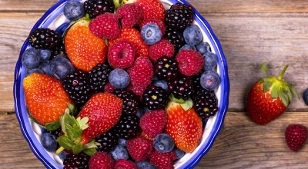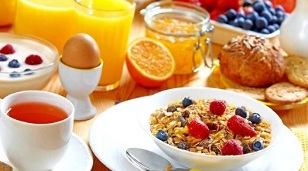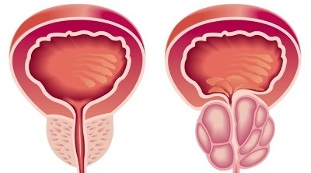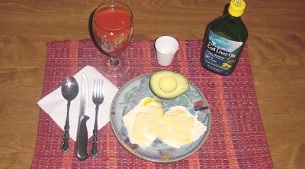
Some of the most common diseases affecting the male reproductive system are prostate adenoma and prostatitis. The second is an inflammatory process that occurs in the tissues of the prostate, that is, the first is a tumor that develops in this organ.
These are problems that are quite actively diagnosed in men. But everyone knows that a proper diet can protect against many ailments as well as become one of the components of the healing process. Thus, a significant role in the treatment of this disease plays a diet for prostatitis and prostate adenoma. With its help, the healing process is more active and takes less time.
The essence of such a diet
No one would claim that food is both medicinal and crippling. For this reason, when pathological changes in the patient's body are detected, the doctor usually prescribes restrictions on a certain number of foods consumed. A similar diet was developed to help the male body fight prostate disease.
It is selected for each patient individually, taking into account the severity of the pathology, his general condition and anamnesis, as well as taste preferences. At the same time, it has been practically proven that without a change in diet and nutritional balance it will not be possible to recover.
Food at best should not worsen the health situation - become one of the elements of the healing process. Therefore, the essence of the diet for prostatitis and prostate adenoma comes down to alleviating the patient's condition.
If a person wants to recover, the restrictions must be adhered to. "Real" meals slow down the development of pathology and increase the chances of faster healing.

Special attention is paid to products that contain a high percentage of selenium (Se) and zinc (Zn), which have a beneficial effect on the tumor by reducing its size. During treatment, the patient should receive 25 mg of zinc during the day, as well as at least 5 μg of selenium.
The products contain a large amount of zinc:
- Seafood: oysters, shellfish, shrimp.
- Red meat, mostly lamb and lean beef.
- Wheat germ and bran. Buckwheat.
- Watermelon and pumpkin seeds
- Chocolate and cocoa powder.
- Beef liver.
- Sesame.
- Peas.
- Egg yolks.
- Mushrooms.
Another important element, selenium, is found in the following foods:
- Pork and beef liver.
- Rice, barley, buckwheat and oatmeal.
- Octopus meat.
- Egg
- Beans and lentils.
- Sea kale.
- Pistachios.
- Peas.
- Caps and shrimps.
- Olive oil.
Also, don't forget about vitamin E, which increases the efficient absorption of selenium. It should be borne in mind that the body absorbs food only part (at best half) of trace elements in its composition.
As the study showed, the main cause (catalyst) of adenoma manifestation is hormonal imbalance, which has been deteriorating over the years. With age, the amount of testosterone decreases, and at the same time the concentration of estradiol increases. Also, the appearance and growth of tumors is affected by an increase in the amount of adipose tissue. It follows that one way to prevent adenomas should be weight control.
In addition, you need to constantly take care of bowel cleansing. Therefore, diet should be associated with solving this problem. But before you start sticking to it, you should study the list of foods you can and can’t eat.
What else is important?
It is not recommended to drink fluids during meals and just before bedtime. Otherwise, the process of digestion worsens, and at the same time the night load on the excretory system increases. Water and drink should be eaten between meals or one hour after a meal.
It is necessary to maintain a balanced diet for adenoma and prostatitis and a variety of foods. Protein foods should predominate. Fat content is allowed, but not more than 30%. Basically, it should be vegetable fats.
Don't overeat at night. It is necessary to monitor your weight, avoid overeating and the appearance of extra pounds.
Reasons for the problem

The main reasons are hormonal changes and infections. Consumed food can also contribute to the development of such pathology.
If the disease has entered a chronic phase, you will have to constantly adhere to these recommendations, because if the regime is violated, it can cause worsening. The main principle of the diet for chronic prostatitis and prostate adenoma is that food should be light, quickly digestible. The rest of the principles of this diet, as well as the list of "useful" and "harmful" products are listed above.
After adenoma removal surgery
With a certain clinical picture, doctors can raise the issue of adenoma excision. After the operation, the patient undergoes rehabilitation, part of which is a diet after prostate adenoma surgery.
Its main principle is the predominance of vegetables, protein foods and fruits, fat reduction, especially animal. Preference should be given to vegetable fats that provide the body with the necessary substances for normal functioning.
High levels of plant proteins in food have a beneficial effect on the body, and this seriously reduces the risk of developing cancer.
The maximum (or completely excluded) limit affects products such as:
- Coarse fibers.
- Foods containing colors, food additives, preservatives and flavors.
- Caloric meals with a high percentage of animal fat.
- Fried, spicy and overly spicy foods.
- Smoked meat and pickles.
- Carbonated and caffeinated drinks.
- Alcohol.
The central part of the diet for prostate adenoma in men should be vegetables and fruits filled with vitamins, fiber, trace elements that activate the digestive process and prevent stagnation in the pelvic organs.

As mentioned above, do not neglect the level of bowel function. In addition to removing food that causes bloating, and can "fix the stool, " you should also review your diet: it should be taken in small meals, but increase the number of meals. This will keep your digestive tract in tune, promoting more active production of gastric juice, which can serve to prevent constipation.
In the postoperative period, prunes, boiled beets, fermented dairy products, dried apricots, carrots, cereals and other dishes that have a mild laxative effect appear on the patient's table.
The diet after BPH should be as follows. To shorten the postoperative recovery period, it is necessary to reduce the load on the digestive and genitourinary system. A balanced diet increases the body's immune status, allowing it to fight disease more effectively and activating hidden reserves for faster recovery.
Diet menu for prostatitis and adenoma
It should comply with the product guidelines above. When the disease worsens, you need to switch to eating small meals. The daily diet should be divided into four to six meals. The diet menu for prostatitis in men should consist of simple and healthy meals.
Below is one daily meal plan. So, a diet for prostatitis for a week can consist of the following menu.
Day One
Breakfast:
- Oatmeal.
- Fruit jam.
- Decaffeinated tea.
Snack: banana (medium).
Lunch:
- Lean vegetable soup.
- Mashed potatoes.
- Chicken breast in sweet and sour sauce.
- Dried fruit compote.
Snack: raspberry jelly.
Dinner:
- Cooked squid.
- Stewed cabbage.
Before bed - yogurt.
Second day
Breakfast:
- Cheese mass.
- Fruit and berry jelly.
- Snack: A handful of nuts.
Dinner:
- Soup cooked in a light vegetable broth.
- Cooked fish.
- Salad - any selection of vegetables (fresh).
- Green tea.
Snack: apple baked with cinnamon and honey.
Dinner:
- Rabbit baked in sour cream.
- Carrot salad with beets.
Before bed: milk (glass).
Third day
Breakfast:
- Barley porridge.
- Raw carrot salad.
- Fruit juice.
Snack: Pumpkin baked with apple.
Lunch:
- Fresh salad of herbs and vegetables.
- Jacob's caps.
- Cooked asparagus.
- Mineral water without gas (glass).
Afternoon snack: fruit salad.
Dinner:
- Fish stew.
- Baked potatoes.
- Fresh cucumber.
Sleep time: Natural yogurt.
Fourth day
Breakfast:
- Boiled egg.
- Buckwheat porridge.
- Berry jelly.
Snack: apples.
Lunch:
- Ear.
- Chicken stew.
- Cabbage cutlet.
- Herbal tea.
Snack: fresh apples.
Dinner:
- Roast chicken in orange sauce.
- Fresh vegetable salad.
Before bed: fermented baked milk (glass).
Fifth day
Breakfast:
- Cooked rice.
- Boiled soft boiled egg.
- Fresh fruit.
Snack: banana dessert.
Lunch:
- Vegetarian borscht.
- Fish baked on a vegetable pillow.
- Lettuce.
- Dried fruit compote.
Afternoon snack: fruit sorbet.
Dinner:
- Squid stuffed with rice.
- Any vegetable salad.
Before bed: kefir (glass).
Sixth day
Breakfast:
- Corn porridge.
- A piece of hard cheese (fat-free).
- Herbal tea.
Snack: pear dessert.
Lunch:
- Spaghetti or any such cooked al dente.
- Meat medallions on a vegetable pillow.
- Fresh cherry tomatoes.
- Fresh fruit compote.
Snack: cottage cheese with sour cream and raisins.
Dinner:
- Pumpkin stuffed with vegetables and meat.
- Fresh cabbage salad.
Before bed: milk (glass).
Seventh day
Breakfast:
- Pearl porridge with carrots and onions.
- Vegetable salad.
- Green tea.
Snack: A handful of nuts (anything).
Lunch:
- Mushroom puree soup.
- Dark bread toast.
- Fresh juice.
Snack: Berry pie.
Dinner:
- Baked fish in foil.
- Vinaigrette.
- Fresh tomatoes.
Before bed: kefir (glass).
How to prepare meals for such a diet?

Below are some recipes for men who have a BPH diet.
As you can see, they are easy to make at home.
Stuffed poultry fillet
To prepare this dish you will need the following:
- Chicken or turkey, fillet - 500-750 grams.
- Rice - half a cup.
- Carrots - one (medium size).
- Bulbs - 1-2 pieces.
- Garlic - 5-6 cloves.
- Tomato juice - 0, 5 liters.
- Pimento - a little.
- Salt of your choice (but keep in mind that a diet for prostatitis and BPH requires a restriction on this product).
- Basil and other herbs (can be dried).
- Any vegetable oil.
Chicken or turkey fillets must be cut lengthwise. Depending on the thickness, you can get two to three thin slices. If it cannot be cut thinly, the thick parts should be lightly brushed off with a kitchen hammer or roller.
Peel a carrot and cut it into thin strips, and the onion in half rings. Peel the garlic and cut the cloves with a knife.
The rice should be washed well with a few servings of water, boiled until soft, lightly kept under the lid, then thrown into a colander and allowed to drain excess liquid. Then add onion, carrot, garlic, basil, pepper and salt. Mix everything well.
Put some minced rice on the fillet slices in the middle and wrap them in envelopes. In order not to disintegrate during further processing, they should be secured with a toothpick or tied with thread.
Pour a little water into a large pot and let it boil. Add tomato juice, vegetable oil and onion. Fry the fillet envelopes on all sides in a pan on a small amount of oil. The fire should be quite intense. The meat should have a crust that protects it from drying out and keeps it juicy. Do not overcook it: the diet for prostatitis and prostate adenoma must be light.
After frying, place the stuffed fillet in a pot of marinade and simmer until soft. Remove thread or toothpicks before serving.
Baked perch with lemon and herbs
You need the following components:
- Pike fillet - 400 grams.
- Ground bread crumbs - one teaspoon.
- Koper - a bunch.
- Lemon is a thing.
- Vegetable oil - three tablespoons.
- Salt of your choice.
Remove all bones from the fish, rinse and dry with a kitchen towel. Prepare the marinade: mix the crackers, oil and salt. Add finely chopped dill. Coat fish fillets with this mixture.
Transfer the fish to a greased baking sheet. Cook the fillets in an oven preheated to 180 degrees for about 15 minutes. It can be served on a table on lettuce leaves.
























